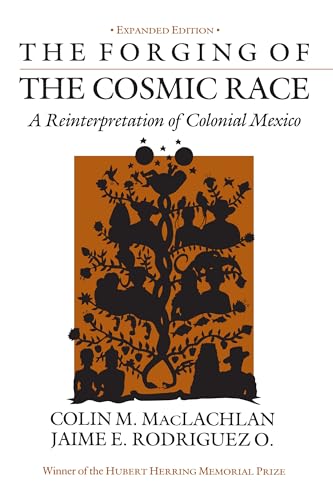
Sinossi
The revisionist view is based on a careful examination of all the recent research done on colonial Mexican history. The study begins with a discussion of the area's rich pre-Columbian heritage. It traces the merging of two great cultural traditions—the Meso-american and the European—which occurred as a consequence of the Spanish conquest. The authors analyze the evolution of a new mestizo society through an examination of the colony's institutions, economy, and social organization. The role of women and of the family receive particular attention because they were critical to the development of colonial Mexico. The work concludes with an analysis of the 18th century reforms and the process of independence which ended the history of the most successful colony in the Western hemisphere.
The role of silver mining emerges as a major factor of Mexico's great socio-economic achievement. The rich silver mines served as an engine of economic growth that stimulated agricultural expansion, pastoral activities, commerce, and manufacturing. The destruction of the silver mines during the wars of Independence was perhaps the most important factor in Mexico's prolonged 19th century economic decline. Without the great wealth from silver mining, economic recovery proved extremely difficult in the post-independence period. These reverses at the end of the colonial epoch are important in understanding why Mexicans came to view the era as a "burden" to be overcome rather than as a formative period upon which to build a new nation.
Le informazioni nella sezione "Riassunto" possono far riferimento a edizioni diverse di questo titolo.
Informazioni sull?autore
Dal risvolto di copertina interno
Le informazioni nella sezione "Su questo libro" possono far riferimento a edizioni diverse di questo titolo.
Altre edizioni note dello stesso titolo
Risultati della ricerca per The Forging of the Cosmic Race: A Reinterpretation...
The Forging of the Cosmic Race : A Reinterpretation of Colonial Mexico
Da: Better World Books, Mishawaka, IN, U.S.A.
Condizione: Good. New Ed. Former library book; may include library markings. Used book that is in clean, average condition without any missing pages. Codice articolo 10211227-6
Compra usato
Quantità: 1 disponibili
The Forging of the Cosmic Race: A Reinterpretation of Colonial Mexico
Da: World of Books (was SecondSale), Montgomery, IL, U.S.A.
Condizione: Good. Item in good condition. Textbooks may not include supplemental items i.e. CDs, access codes etc. Codice articolo 00087099731
Compra usato
Quantità: 2 disponibili
The Forging of the Cosmic Race: A Reinterpretation of Colonial Mexico
Da: ThriftBooks-Dallas, Dallas, TX, U.S.A.
Paperback. Condizione: Good. No Jacket. Pages can have notes/highlighting. Spine may show signs of wear. ~ ThriftBooks: Read More, Spend Less 1.28. Codice articolo G0520042808I3N00
Compra usato
Quantità: 1 disponibili
The Forging of the Cosmic Race: A Reinterpretation of Colonial Mexico
Da: ThriftBooks-Dallas, Dallas, TX, U.S.A.
Paperback. Condizione: Very Good. No Jacket. May have limited writing in cover pages. Pages are unmarked. ~ ThriftBooks: Read More, Spend Less. Codice articolo G0520042808I4N00
Compra usato
Quantità: 1 disponibili
The Forging of the Cosmic Race: A Reinterpretation of Colonial Mexico
Da: ThriftBooks-Reno, Reno, NV, U.S.A.
Paperback. Condizione: Good. No Jacket. Pages can have notes/highlighting. Spine may show signs of wear. ~ ThriftBooks: Read More, Spend Less. Codice articolo G0520042808I3N00
Compra usato
Quantità: 1 disponibili
The Forging of the Cosmic Race: A Reinterpretation of Colonial Mexico
Da: ThriftBooks-Atlanta, AUSTELL, GA, U.S.A.
Paperback. Condizione: Good. No Jacket. Pages can have notes/highlighting. Spine may show signs of wear. ~ ThriftBooks: Read More, Spend Less. Codice articolo G0520042808I3N00
Compra usato
Quantità: 1 disponibili
The Forging of the Cosmic Race: A Reinterpretation of Colonial Mexico
Da: HPB-Emerald, Dallas, TX, U.S.A.
Paperback. Condizione: Very Good. Connecting readers with great books since 1972! Used books may not include companion materials, and may have some shelf wear or limited writing. We ship orders daily and Customer Service is our top priority! Codice articolo S_429466962
Compra usato
Quantità: 1 disponibili
The Forging of the Cosmic Race: A Reinterpretation of Colonial Mexico
Da: Books From California, Simi Valley, CA, U.S.A.
Paperback. Condizione: Good. Wear and creases to the book. Codice articolo mon0002891646
Compra usato
Quantità: 1 disponibili
The Forging of the Cosmic Race: A Reinterpretation of Colonial Mexico
Da: Half Price Books Inc., Dallas, TX, U.S.A.
Paperback. Condizione: Very Good. Connecting readers with great books since 1972! Used books may not include companion materials, and may have some shelf wear or limited writing. We ship orders daily and Customer Service is our top priority! Codice articolo S_447674624
Compra usato
Quantità: 1 disponibili
Forging of the Cosmic Race: A Reinterpretation of Colonial Mexico
Da: HPB-Diamond, Dallas, TX, U.S.A.
paperback. Condizione: Very Good. Connecting readers with great books since 1972! Used books may not include companion materials, and may have some shelf wear or limited writing. We ship orders daily and Customer Service is our top priority! Codice articolo S_446735241
Compra usato
Quantità: 1 disponibili

